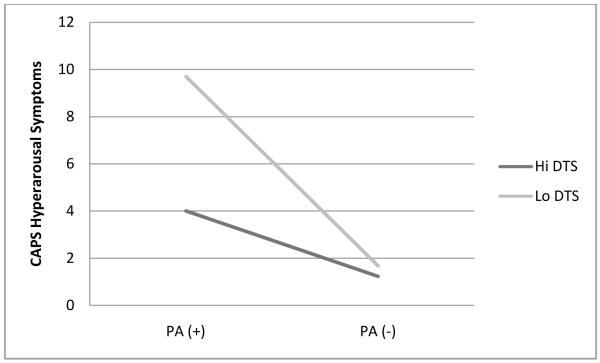Figure 1.
Interactive effects of distress tolerance and panic attack status in predicting CAPS hyperarousal symptoms
Note: Based on recommendations of Cohen and Cohen (1983; pp. 323, 419), the form of the significant interaction was examined graphically by inserting specific values for each predictor variable (1/2 SD above and below the mean, in the current study) into the regression equation associated with the described analysis. “PA(+)” – Recent (past two years) history of nonclinical panic attacks; “PA(−)” – No history of panic attacks; “Hi DTS” – 1/2 SD above the sample mean on the Distress Tolerance Scale (Simons & Gaher, 2005); “Lo DTS” – 1/2 SD below the sample mean on the Distress Tolerance Scale; “CAPS Hyperarousal Symptoms” – Hyperarousal traumatic stress symptom severity endorsed on the Clinician Administered PTSD Scale (Blake et al., 1995).

